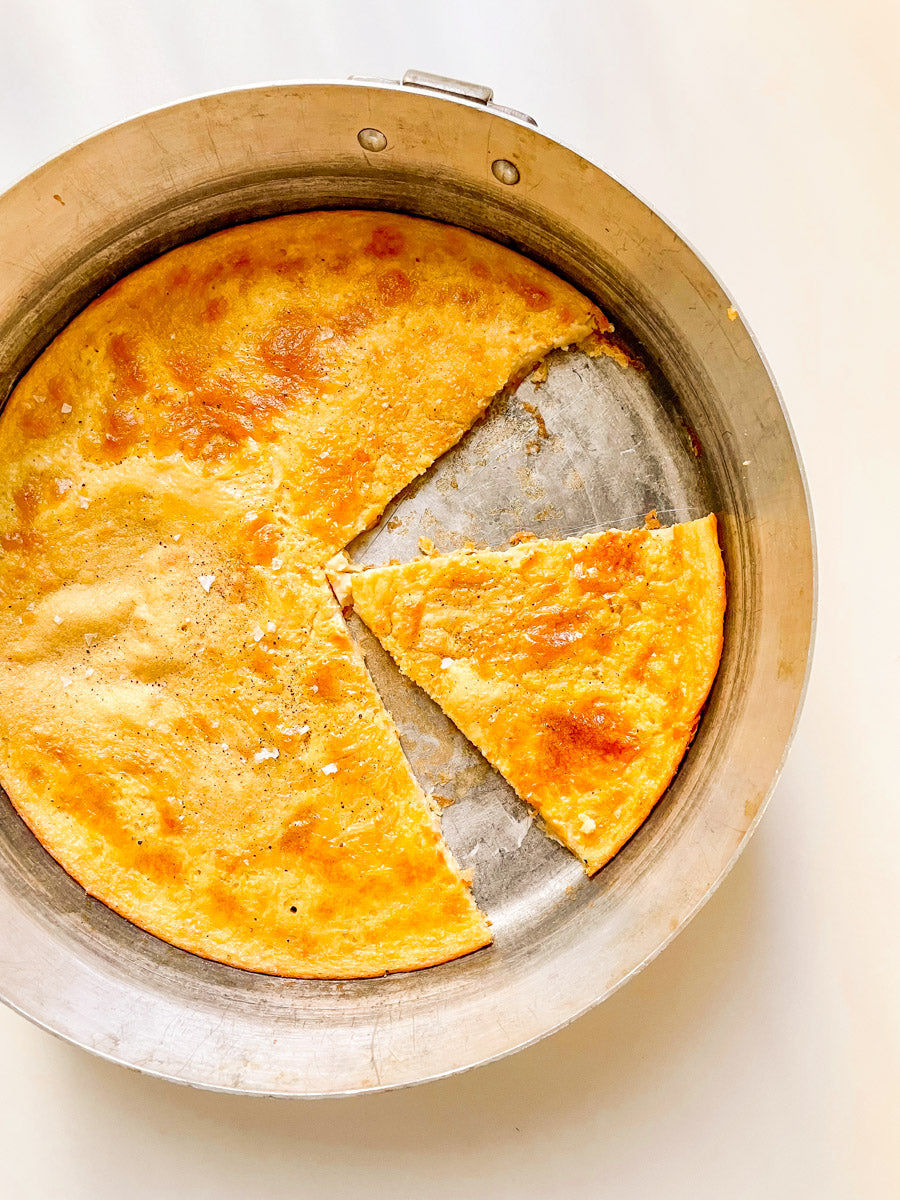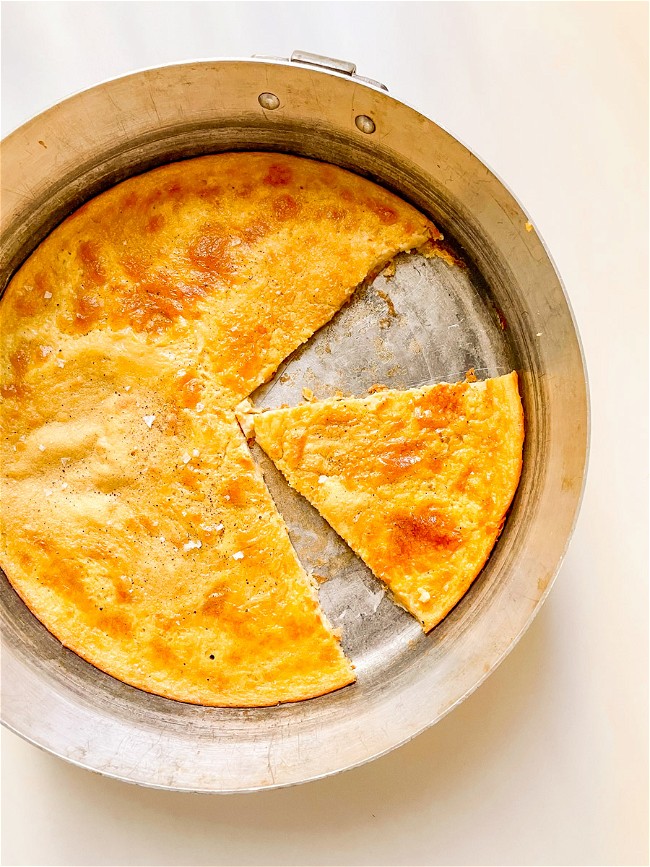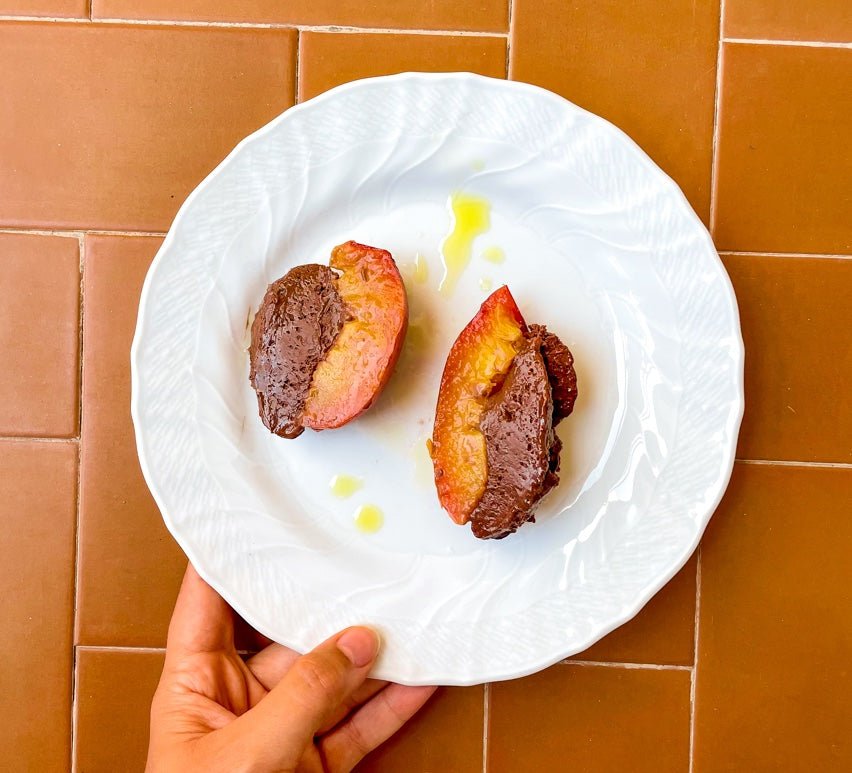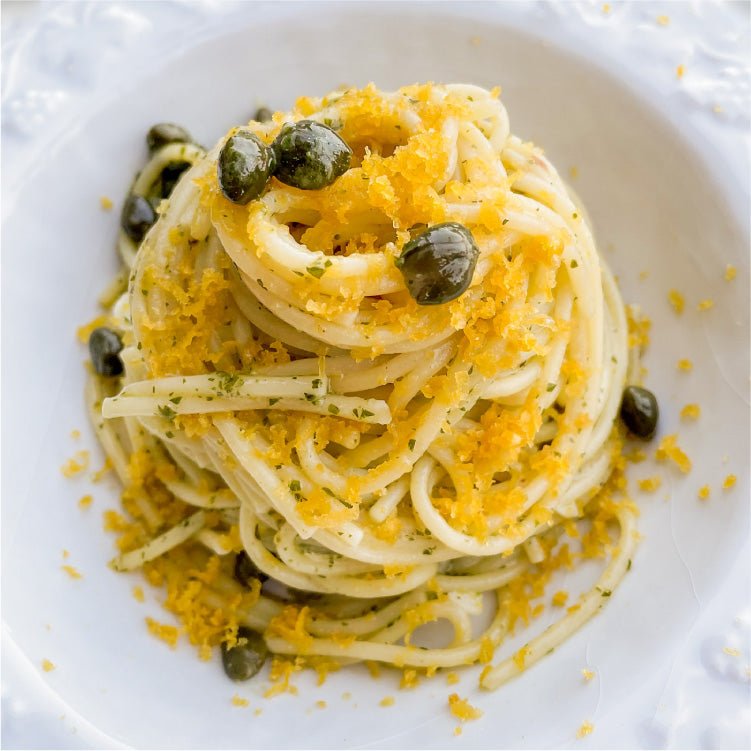
Only four ingredients are needed to make the humble and tasty dish farinata. Originally from Liguria, farinata is now one of Italy’s most well-loved street foods!
This savory, pancake-like dish is often used as an alternative to bread.
There are two main legends that tell of the creation of farinata. The first legend is that it was created by Roman troops. In Roman times, flour was a luxury that most troops could not afford. Chickpeas were a much more affordable option, and so soldiers would prepare a mixture of chickpea flour and water for their bread. They would then place the mixture in their metal shields and let the mixture cook in the hot Italian sun.
The second legend holds that farinata was born in 1284 during the battle of Meloria between Genoa and Pisa. When Genoa’s navy finally defeated the Pisans, they took many of their soldiers captive. The Pisans were thrown into the holds of the navy ships to be brought back to Genoa.
The Genoan navy ships used both sails and oarsmen to speed across the water. With its high protein content and long shelf life, their oarsmen were often fed soup made with chickpeas.
While sailing through the Bay of Biscay on their way home from battle, the Genoan’s ships were struck by a fierce storm. Their ships’ holds were flooded, and their barrels of dried chickpeas and olive oil broke open. Chickpeas and olive oil spilled across the flooded hold, mixing with the seawater pouring in from above.
Once the storm had cleared, and with supplies now running dangerously low, the Genoans decided to feed the chickpea-olive oil-seawater mush to their captives.
Some of the captives forced the mush down, while others refused to stoop so low, leaving their bowls untouched in the sun.
By the next day, however, the Pisans could no longer keep their hunger at bay. They returned to their leftover bowls of mush and found that the sun had baked the mixture into a sort of pancake or focaccia - much more palatable!
Once back on land, the Genoese decided to perfect this new culinary discovery. And, to taunt the Pisans, they took to calling it the Gold of Pisa. Later on, it became known throughout Italy as farinata.
Whichever way farinata first came to be, Italians can all agree that the sight of farinata fa venire l’acquolina in bocca! (makes your mouth water!)
– Julia & Camillo




